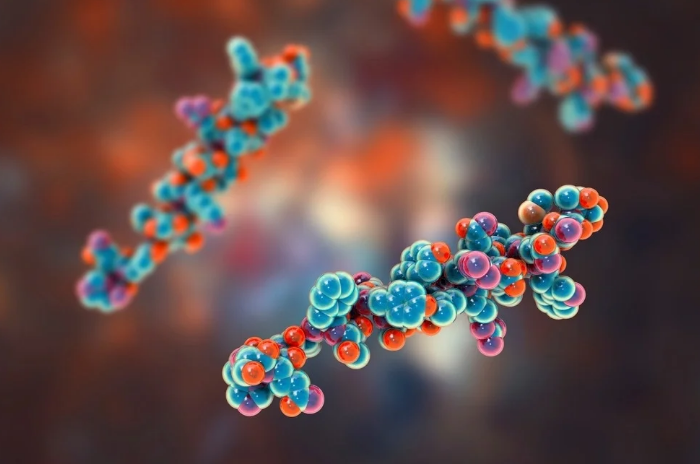Introduction
Peptide-based therapies are emerging as a revolutionary approach in modern medicine, offering targeted treatment options for various conditions, including cancer, metabolic disorders, and infectious diseases. Peptides, short chains of amino acids, play critical roles in the body as signaling molecules, and their synthetic versions are now being used to develop drugs that provide high specificity and efficacy with fewer side effects. This article explores how peptide-based therapies work, their applications, and their potential to transform healthcare.
What Are Peptides and How Do They Work?
Peptides are smaller versions of proteins, composed of two or more amino acids linked by peptide bonds. They act as hormones, neurotransmitters, and growth factors in the body, mediating a wide range of biological processes. In therapeutic applications, synthetic peptides are engineered to mimic these natural processes, helping to regulate immune responses, promote healing, or inhibit harmful cellular functions.
Types of Peptide-Based Therapies
- Peptide Hormones: These are among the most commonly used peptide-based therapies. They replace or enhance natural hormone levels in conditions like diabetes and growth disorders.
- Insulin: Perhaps the most well-known peptide therapy, insulin regulates blood sugar levels in individuals with diabetes.
- Human Growth Hormone (HGH): Used to treat growth hormone deficiencies and certain metabolic disorders.
- Antimicrobial Peptides (AMPs): AMPs are being explored as alternatives to traditional antibiotics in the fight against antibiotic-resistant bacteria. They destroy bacterial cells by disrupting their membranes, making them a powerful tool against drug-resistant infections.
- Defensins: Natural antimicrobial peptides that are part of the body’s immune defense, now being developed for clinical use.
- Cancer Therapeutics: Peptides can be engineered to target cancer cells specifically, either by delivering toxic agents directly to the tumor or by blocking cancer-promoting signals within the cell.
- Peptide Vaccines: These stimulate the immune system to recognize and destroy cancer cells, providing a form of cancer immunotherapy.
- Peptide Receptor Radionuclide Therapy (PRRT): Used in treating neuroendocrine tumors by delivering radioactive substances directly to cancer cells.
- Peptides in Cardiovascular Disease: Peptides like natriuretic peptides help regulate blood pressure and fluid balance, offering therapeutic benefits for heart failure and hypertension.
- Nesiritide: A synthetic form of human B-type natriuretic peptide, used to treat acute heart failure by promoting vasodilation and reducing fluid overload.
Benefits of Peptide-Based Therapies
- High Specificity: Peptides are highly specific to their target receptors, meaning they can interact with diseased cells or proteins with minimal effect on healthy tissues.
- Low Toxicity: Due to their natural origin, peptides tend to have lower toxicity and fewer side effects compared to conventional drugs.
- Versatility: Peptides can be designed to target a wide range of diseases, from cancer to infectious diseases and metabolic disorders.
- Short Half-Life: While this may initially seem like a disadvantage, the short half-life of peptides reduces the risk of long-term accumulation in the body, minimizing potential side effects.
Challenges in Peptide Therapy
- Stability: Peptides are prone to degradation by enzymes in the body, limiting their stability and effectiveness.
- Delivery: Due to their size and structure, peptides often struggle to cross biological barriers, such as the gastrointestinal tract and blood-brain barrier, making oral delivery difficult.
- Cost of Production: Synthetic peptide production is complex and expensive, although advances in manufacturing technologies are helping to reduce costs.
Advances in Peptide Drug Delivery
To overcome challenges like stability and delivery, scientists are exploring various strategies:
- Nanoparticle Delivery Systems: By encapsulating peptides in nanoparticles, researchers can protect them from degradation and improve their ability to target specific tissues.
- PEGylation: Attaching polyethylene glycol (PEG) to peptides increases their stability and circulation time in the body.
- Oral Peptide Delivery: Recent advances have made oral delivery of peptide drugs possible, a significant development that improves patient compliance.
Peptide Therapies on the Horizon
The future of peptide-based therapies looks promising, with ongoing research expanding their use in areas such as:
- Metabolic Disorders: Peptides like GLP-1 agonists are being developed to treat obesity and type 2 diabetes by regulating appetite and insulin secretion.
- Neurological Disorders: Peptides that can cross the blood-brain barrier are being studied for their potential to treat neurodegenerative diseases like Alzheimer’s and Parkinson’s.
- Peptide Vaccines: In addition to cancer, peptide vaccines are being developed to provide immunity against viral infections, including HIV and COVID-19.
Conclusion
Peptide-based therapies represent a powerful and versatile tool in the treatment of various diseases, from cancer to infectious and metabolic disorders. As technology advances, overcoming challenges like stability and delivery will further expand their therapeutic potential. With their high specificity, low toxicity, and wide range of applications, peptide-based therapies are poised to play a crucial role in the future of medicine.
References:
- Fosgerau, K., & Hoffmann, T. (2015). Peptide therapeutics: Current status and future directions. Drug Discovery Today.
- Craik, D. J., Fairlie, D. P., Liras, S., & Price, D. (2013). The future of peptide-based drugs. Chemical Biology & Drug Design.
- Ahrens, V. M., Bellmann-Sickert, K., & Beck-Sickinger, A. G. (2012). Peptides and peptide mimetics as modulators of protein–protein interactions. Future Medicinal Chemistry.
